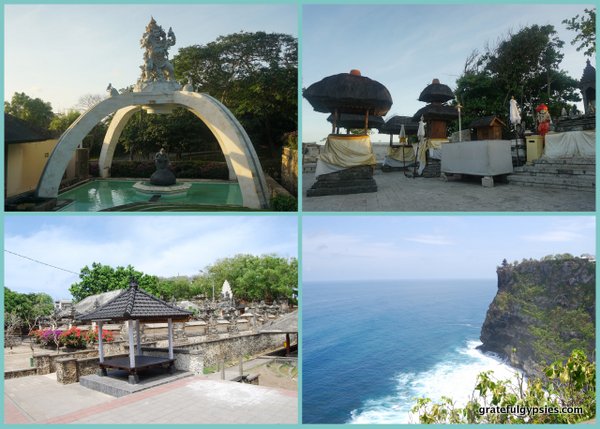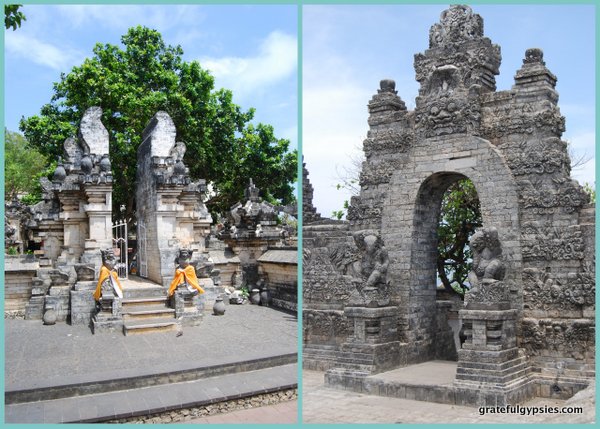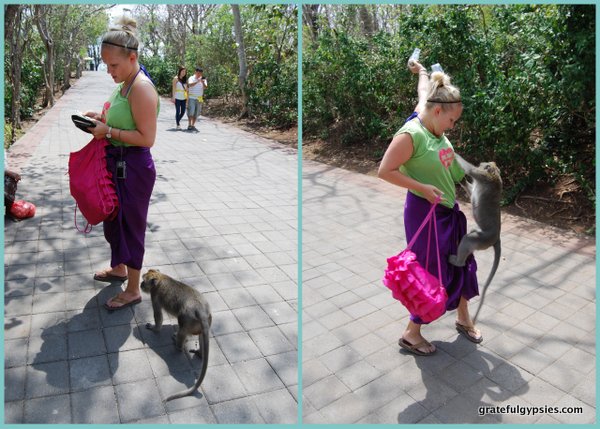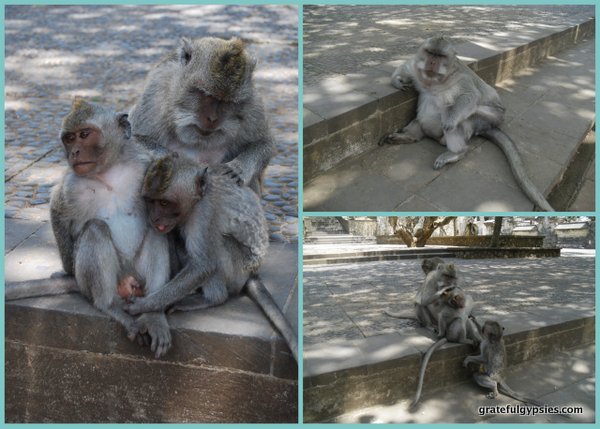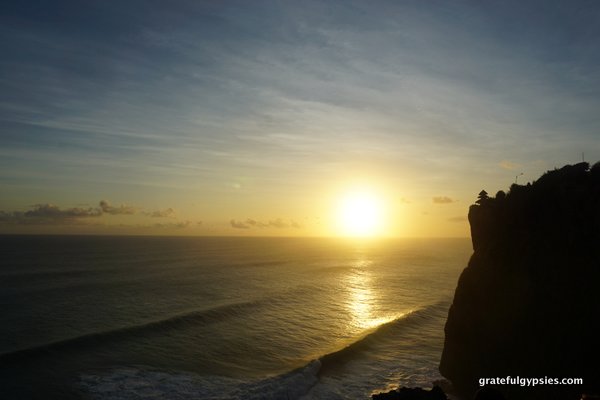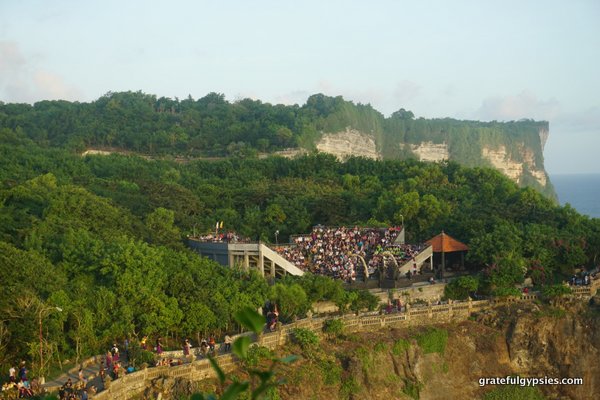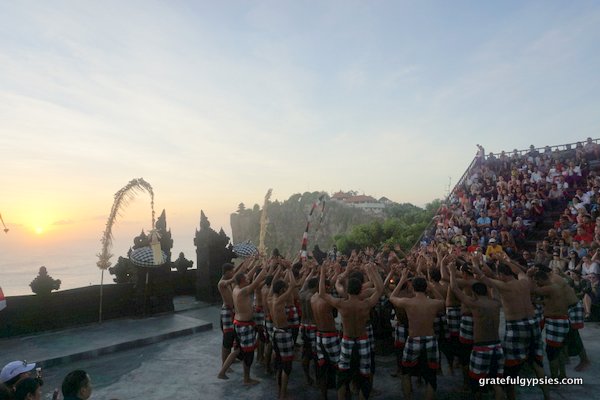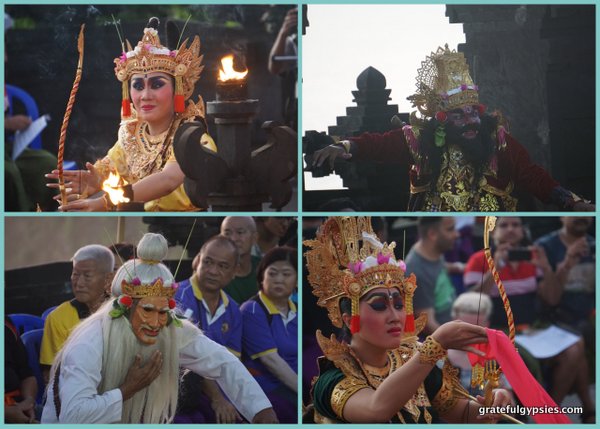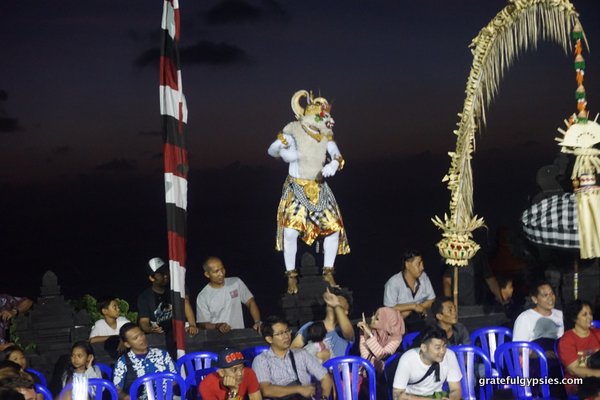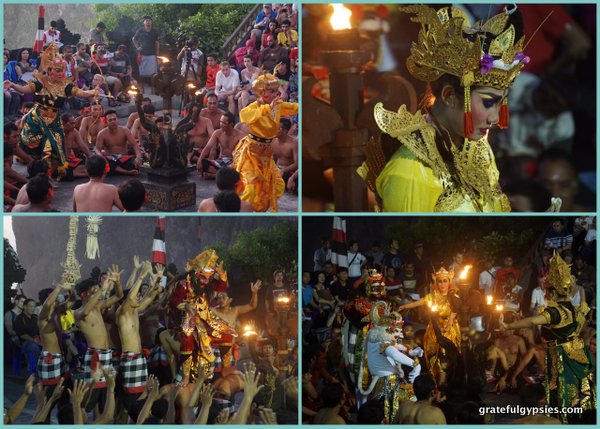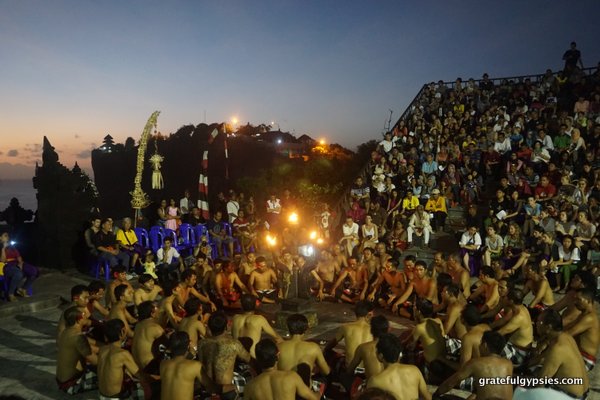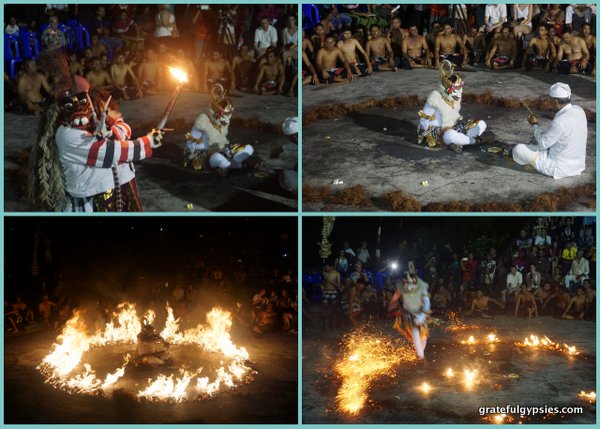Uluwatu Temple and Kecak Dance Posted by sasha on Jul 21, 2016 in Uncategorized
Bali is home to over a thousand pura (temples), which play a vital role in the daily lives of the island’s inhabitants. Temples in every village across the island host important ceremonies, such as Purnama (full moon) and funerals. While each temple is important in its own right, the nine directional temples are a step above the rest. Known collectively as Pura Kahyangan Jagat, these temples all occupy auspicious locations – in the side of a mountain, in a cave, or on a cliff top. One such temple is Pura Luhur Uluwatu. This temple is one of the most popular to visit, thanks to its stunning cliffside location, naughty monkeys, beautiful sunsets, and spectacular kecak performance.
Uluwatu Temple
Uluwatu is a pura segara (sea temple) perched on a steep cliff 70 meters above the sea. In Balinese, Ulu means “top” or “tip,” while Watu means “stone” or “rock” – the temple on top of the rock. Thanks to its location, Uluwatu boasts some of the best views on the island.
Balinese Hindus believe that Brahma, Shiva, and Vishnu become one here. This makes Uluwatu Temple a place of worship of Sang Hyang Widhi Wasa (the supreme god of Indonesian Hinduism) in his manifestation as Rudra. Thanks to its location, Uluwatu also helps to guard the island from evil sea spirits.
It’s believed that a small temple existed here earlier, but that a Javanese sage named Empu Kuturan substantially expanded it in the 11th century. Another sage named Dang Hyang Nirartha is credited with building the shrines here, and it’s believed that he attained moksha here – the release from the cycle of of death and rebirth. Locally, this is known as ngeluhur (to go up), which is why Luhur is added to the temple’s name.
Naughty Monkeys
You won’t be alone when visiting Uluwatu temple, as it’s home to hundreds of crab-eating macaques, also known as Balinese long-tailed monkeys. While it may seem like a nice idea to buy a little bag of snacks to feed the monkeys, you’ll regret the decision before too long. These cheeky monyet (monkies) will stop at nothing to get the entire bag of treats – just look at the series of photos above to see what happened to my wife on our visit.
Unlike their counterparts at the Monkey Forest in Ubud – who are actually quite friendly – the monkeys at Uluwatu are expert thieves. Any loose items are fair game – hats, sunglasses, and cell phones are all stolen from unsuspecting tourists on a daily basis. The Uluwatu monkeys are so notorious, they even made a BBC list of “World’s Naughtiest Animals.” See for yourself:
Monkey very naughty.
Beautiful Sunsets
Thanks to its location on a cliff in the far south of the island, Uluwatu is one of the best places in Bali to catch a sunset. Peering over the cliff out at the Indian Ocean with the sun disappearing beyond the horizon, it really feels like you’re on the edge of the world. Just be warned – you’ll be sharing this view with hundreds upon hundreds of other tourists. Consider getting here a bit earlier to stake out a spot, especially if you’re looking to snap photos free of the crowds.
Kecak Performance
Every evening at 6, there’s a kecak performance and fire dance in the outdoor theater located to the side of the temple. This one of a kind performance features a group of about 100 men chanting rather than the traditional gamelan orchestra to accompany the dancers. To learn more about this traditional Balinese performance, check out our post that’s all about kecak.
The show starts with a holy man making a blessing on the site, and then the group of men enter and also receive a blessing. The chanting then begins, and continues on its own for a few minutes before the dancers begin to arrive.
The Hindu epic Ramayana is told through the dance and is a very important aspect of Hinduism. Be sure to read up on the Ramayana before you watch the show, as it will help you understand it much better. Here are a few shots from the show to give you a better idea of what it looks like:
While the kecak show at Uluwatu is certainly a very touristy activity, it’s well worth it to brave the crowds. There are plenty of places to see kecak, but none come close to the beauty of Uluwatu, with its cliffside location and stunning sunsets. Just about every tour guide and travel agency on the island has trips that include a visit to the temple and the show, or you could get yourself there on a motorbike or with a hired driver. Explore the temple, enjoy the views, watch out for the monkeys, and then sit back to take in the sunset and an amazing performance.

Build vocabulary, practice pronunciation, and more with Transparent Language Online. Available anytime, anywhere, on any device.
About the Author: sasha
Sasha is an English teacher, writer, photographer, and videographer from the great state of Michigan. Upon graduating from Michigan State University, he moved to China and spent 5+ years living, working, studying, and traveling there. He also studied Indonesian Language & Culture in Bali for a year. He and his wife run the travel blog Grateful Gypsies, and they're currently trying the digital nomad lifestyle across Latin America.



